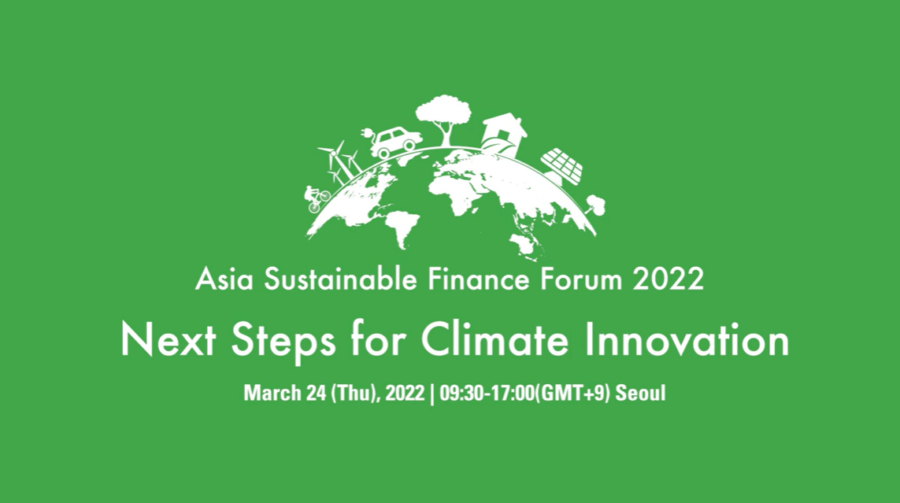The inaugural Asia Sustainable Finance Forum (ASFF) 2022, co-organized by a consortium of institutions including Stanford, brought together people in academia, industry and policy to work toward global net-zero transitions — negating greenhouse gas emissions for better climate health — in Asian economies. The event took place in Seoul, Korea, on Mar. 23.
After the developed world’s $100 billion commitment to help developing countries fight climate change fell short, last year’s surge in private-sector climate financing in emerging markets opened up a new avenue for change.
With the importance of financing in mind, BloombergNEF’s head of APAC Research Ali Izadi discussed the group’s capital investment findings from their annual New Energy Outlook report during the forum.
“If you look at [indicators] from December 2021, we had about $130 billion in net flows. That’s almost double December 2020, which was about $70 billion,” Izadi said. The sharp rise in capital invested into the climate space indicates accelerating growth and interest in the field globally, according to Izadi.
The total lending for climate-related solutions also rose to over $1.6 trillion in 2021, Izadi said. This increase means that the Asia-Pacific economy, like the rest of the world, has rapidly developed its renewable power plants and energy-storage technologies over the past year. Stanford has also done its part in climate-change finance through leading by example, according to University Treasurer Karen Kearney. Further, the University has started running on 100% renewables.
Even so, there are currently three problems with the climate financing, according to Poland’s former Minister of Climate and Environment Michał Kurtyka. One difficulty is in obtaining money from private investors to develop buildings and technology, as it can be a challenge to instill confidence in private investors, especially when metrics to measure climate impact are not well-established, Kurtyka said.
Kurtyka added that the international equity within a just climate transition needs to be addressed. He explained that it is important to develop reparations to accommodate for rises in taxes or the cost of living in less economically developed nations as a result of climate funding, as well as workforce transitions for fossil-fuel-industry employees. There also has to be a stronger solidarity mechanism in promoting international collaboration and keeping nations accountable to their nationally determined commitments (NDCs) for climate transitions, Kurtyka said.
“I think that the challenge that we are facing is to make sure that [the] private sector is really dedicated to filling the gap in terms of these missing technologies,” Kurtyka said. “[Tackling climate change] is an opportunity for us also to be a different planet in terms of helping one another.”
From the private-sector perspective, regional players like global energy company Hanwha Energy Corporation took steps forward in phasing out their coal-fired power plants, moving to less harmful liquid natural gas power plants. Hanwha Energy Corporation Chief Executive Officer Jung In-Sub said that, over the past 15 years, the company increased investment in solar cells and green hydrogen. Hanhwa also envisions a distributed energy network, where the company’s customers can produce their energy at home and feed excess electricity into the grid system, reducing transportation-related inefficiencies. Beyond that, issues with renewable electricity production have motivated increased interest in energy storage systems to make the most out of renewables infrastructure.
Despite these energy projects, the climate-financing mechanism remains a key target for just transitions in developing economies.
“The scale of [investment] required is enormous. Emissions must fall 7% per year over the course of this decade,” said Mark Carney, United Nations Special Envoy on Climate Action and Finance and former governor of the Bank of England. “This corresponds to tripling energy infrastructure investment to almost $5 trillion per year.”
Structural changes in climate financing also need to be addressed, the speakers said. World Bank Regional Vice President for East Asia and Pacific Manuela V. Ferro said that there is a need for better carbon pricing and market improvements in developing countries. Efforts like World Bank’s Partnership for Market Readiness (PMR) have supported 23 emerging economies, such as Thailand and Vietnam, and culminated in revisions of policies and carbon pricing instruments (CPI) of the carbon offsets market in the region.
Managing carbon pricing and price signals across different nations “will require policy frameworks that encourage investments, including by putting a realistic price on carbon,” Ferro said. In the adaptation space, however, Ferro said that “it will also require more robust and adaptive social and fiscal protection systems” to adjust for the impacts of natural disasters and workforce transition.
Fortunately, progress is under way. The recent adoption of 24 climate financial reforms in the 26th United Nations Climate Change conference (COP26) is a step in the right direction, according to Carney. He emphasized the importance of developing mandatory climate disclosure, where private firms report their climate impacts which are overseen by the International Sustainability Standards Board (ISSB). The initiative is now already backed by more than 45 nations, representing over 75% of global emissions.
Within the Asia Pacific region, there is over $16 trillion worth of investment from 50 nations. “The potential for the money is there to finance that enormous transition,” said Carney.
Now, more than 450 of the world’s largest financial institutions have committed to collectively contribute over $130 trillion to a net-zero future.
